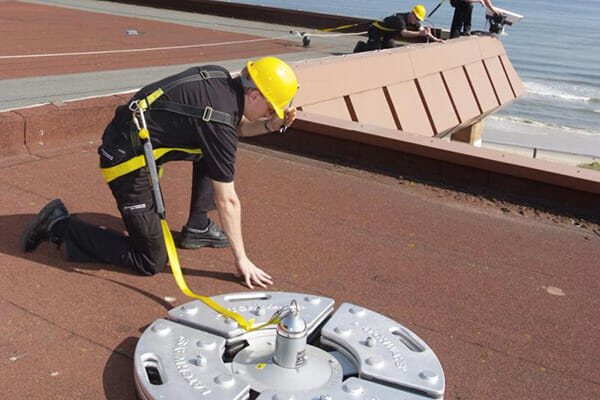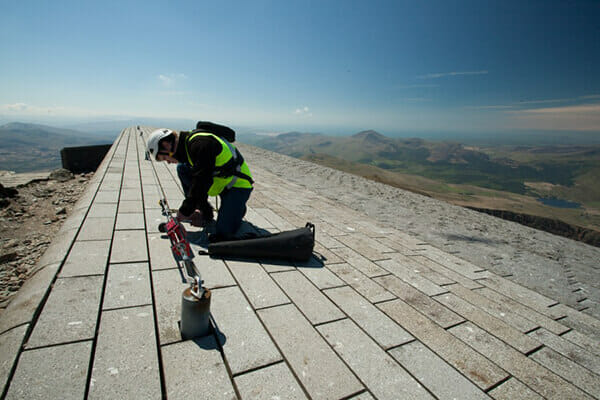Overview of PPE Inspection & Examination
It is critical that all Personal Protective Equipment is visually examined by a competent person prior to being worn and thereafter at regular intervals (at least every 6 months). The user must always thoroughly examine their PPE before use.
Personal Protective Equipment must be given a visual and tactile inspection prior to use at all times.
Particular attention should be paid to the following;
- Webbing – Check for cuts, cracks, tears, abrasion and scorch marks, burns or chemical attack
- Stitching – Look for broken stitch, loose or worn threads
- Metalware – Inspect for signs of damage/distortion/corrosion, and correct operation of buckles.
Local abrasion caused by general wear may be caused by the passage of the webbing over sharp edges or protrusions while under tension and can cause serious loss of strength. Even slight damage to outer fibres and occasional yarn may be considered harmless. Serious reduction in width or thickness of the webbing or serious distortion to the weave pattern, should lead to rejection.
Personal Protective Equipment must be immediately removed from service after being subjected to any fall, or if in any doubt about the history of the PPE.
The harness may be cleaned or disinfected if required although the following procedure must be adhered to.
- Use hand hot water with a mild detergent or disinfectant
- Rinse with clean water
- Allow to dry naturally out of direct sunlight
- Any detergent or disinfectant used must be compatible with polyamide and polyester
- Generally the maximum life span for textile items such as Harnesses, Lanyards etc is five years from first use or 10 years from the manufacturers date. Any equipment with an age in excess of this should be removed from service and destroyed
- If PPE is to be withdrawn from service, it should be destroyed and logged in the record card. This stops any potential mis-use of damaged PPE.
All equipment should be stored and transported in the following manner.
- To prevent contact with sharp objects that may damage the fibres of the webbing
- Away from harmful substances such as acids, alkalis, fuel, paints, solvents that harm polyester and nylon fibres
- Kept in a cool dry place free from direct sunlight, to prevent degradation of the fibres from ultraviolet radiation
- If the equipment becomes wet during use, it should be allowed to dry naturally away from direct heat.
When should I replace my harness?
Your personal safety should be your highest priority. Therefore you must ensure your equipment is of sufficient standard and fit for purpose. Fallarrest.com have compiled a list of general guidelines for when a harness is no longer considered safe and cannot be used.
Label inspection
If you do not have an individual serial number, the harness may not be fit for use and needs to be returned to the supplier and reissued. Never use a harness that has no label.
Why?
Without a serial number, you are unable to trace the harness or verify if the harness has been inspected and therefore cannot be sure if it is safe to use.
If you cannot find a manufacturing date the harness needs to be destroyed.
Why?
If you do not have a manufacturing date there is no way to confirm if the harness is within its 10 year birth date.
If you cannot find an inspection date recorded within the last 12 months do not use it
Why?
HSE guidelines recommend an inspection by a professional service every 6 months. PPE regulations require a minimum of 12 monthly inspections which should be recorded on the harness itself unless the product is less than 12 months old.
Hardware inspection
When Checking any of the hardware (this means the “D” ring, plastic back plate, fasteners, web ties, adjusters or connectors), ANY of the following will mean the harness should be removed from service and inspected by a professional or destroyed.
Distortion
Is any of the hardware buckled, twisted or generally malformed? This would be a good indicator if the harness has been used in a fall arrest scenario and should not be used again. The stress from a fall could be enough to cause unseen damage to the harness.
Cracking, Dents or Nicks
Are there any cracks, dents, nicks or stress lines in the hardware? If so, then destroy the harness immediately. A harness needs only a single point of failure to cause an injury or fail in the event of a fall. These areas are designed to direct the force along the webbing or directly absorb impact, any failure on these points could be disastrous.
Discoloration
Discoloration could be an indication of damage. The harness should be inspected by a professional before being used again.
General Damage/Wear and tear
If you can see any kind of damage to the hardware, however minor, that has not been recorded in an inspection, then you should remove the harness from service until a professional can confirm the extent of the damage.
Fatigue or Rust
There is a certain allowance for this.15% is the maximum tolerance and shouldn’t be confused with area. The tolerance relates to surface penetration. If the harness has visible signs of rust or spotting, this could still be fine. The general guideline is, if you rub the rust between thumb and forefinger and are left with a residue that exceeds 15%, it should be removed from service.
Burrs
A Burr on hardware could indicate a problem with the casting or an underlying issue. Remove the harness from service and do not re-issue it until it has been inspected and verified by a professional.
Software inspection
When checking the harness webbing, if any of the following issues are found the harness needs to be removed from service to be checked by a professional or destroyed.
UV Damage
Ultra Violet damage can be caused when the webbing is exposed to lengthy storage in direct sunlight which can weaken the webbing. A good indicator of UV damage is colour fading and the best way to check is to compare to a new harness. If discovered, we recommend the harness is removed from service until inspected.
Chemical Damage
Staining is a good indicator of chemical damage and can be confirmed if the webbing underneath is brittle or hardened. In general the guideline is, if the stain does not come out after washing, the equipment is unfit for use. This includes permanent markers. You should always ensure that any of your personal protection equipment is never stored near any form of chemical. In any event that it does, then the equipment should be disposed of in the correct manner.
Cuts, Frays or Burns
Check the condition of the webbing by running your fingers down each strap and making sure it is complete and free from damage. If you find any, remove the harness from service.
General Condition
Once you have finished the specific inspections, confirm that all the straps hang correctly, that there is no obvious damage, that all the stitching is present and that you feel comfortable using the item. If at any point you don’t, then seek a replacement.
Remember: all failed equipment should be destroyed so it cannot be put back into service and identified and recorded on a record sheet.
How do I inspect my fall arrest harness?
Inspecting your fall arrest harness may seem a tiresome activity but should be an essential part of your routine considering that this equipment could save your life, which is what the equipment is for.
Break up the inspection into these steps
1. Check the “label”
- Confirm that the “label” has an individual serial number
- Confirm that the “label” has a valid inspection date and there are no reported problems
- Confirm the manufacturing date is present and that the harness does not exceed it’s working life
- Remember that it’s 10 years from the manufacture date OR 5 years from when first put into use.
2. Hardware check
Check condition of rear “D” Ring for:
- Distortion
- Fatigue/Rust. Remember that the rule of thumb is the excess of 15% surface coverage. If you can rub the rust off between thumb and forefinger, then it is unacceptable.
- Cracking
- Burrs
- Nicks
- Excessive Wear.
Check plastic back plate, fasteners, web tidies, adjusters and connectors for:
- Excessive wear
- Cracks
- Damage
- Discolouration.
3. Software check
- Hold the harness up by the shoulder straps and ensure that the webbing hangs evenly.
- Connect buckles and ensure harness is not distorted and hangs correctly.
- Check webbing for signs of UV. Colour fading is a good indication of UV damage and is easiest to identify when comparing to a new harness.
- Check webbing for signs of Chemical damage. Staining is a good indication of chemical damage and can be identified if the harness appears brittle or hardened.
- Check condition of webbing by running through thumb and forefinger.
in all cases software must be free from:
- Cuts
- Fraying
- Excessive Abrasion
If you encounter any problems or you are unsure that your harness fits to the standard defined above, replace it.
It is worth noting that proper care and cleaning of a fall arrest harness is just as important as the inspection itself.
Care:
- Store in a clean, dry place away from direct sunlight
- Do not use a drying room to dry webbing products
- Do not stand on a harness when donning or removing
- Do not use marker pen or solvents
- Clean using non biological detergent at a low temperature.
Cleaning:
- Before an inspection, make sure equipment is clean.
- Wash in warm soapy water with a sponge and hang to dry naturally
- Never expose to heat and never use a drying room.
*please note:
The working life is defined by a valid and registered first issue certificate which is also known as a birth certificate. If this is not available, then the working life is set by your manufacturing date which has a five year working life.This is a guideline regards the harness working life and may be subject to the individual manufacturer specifications.





